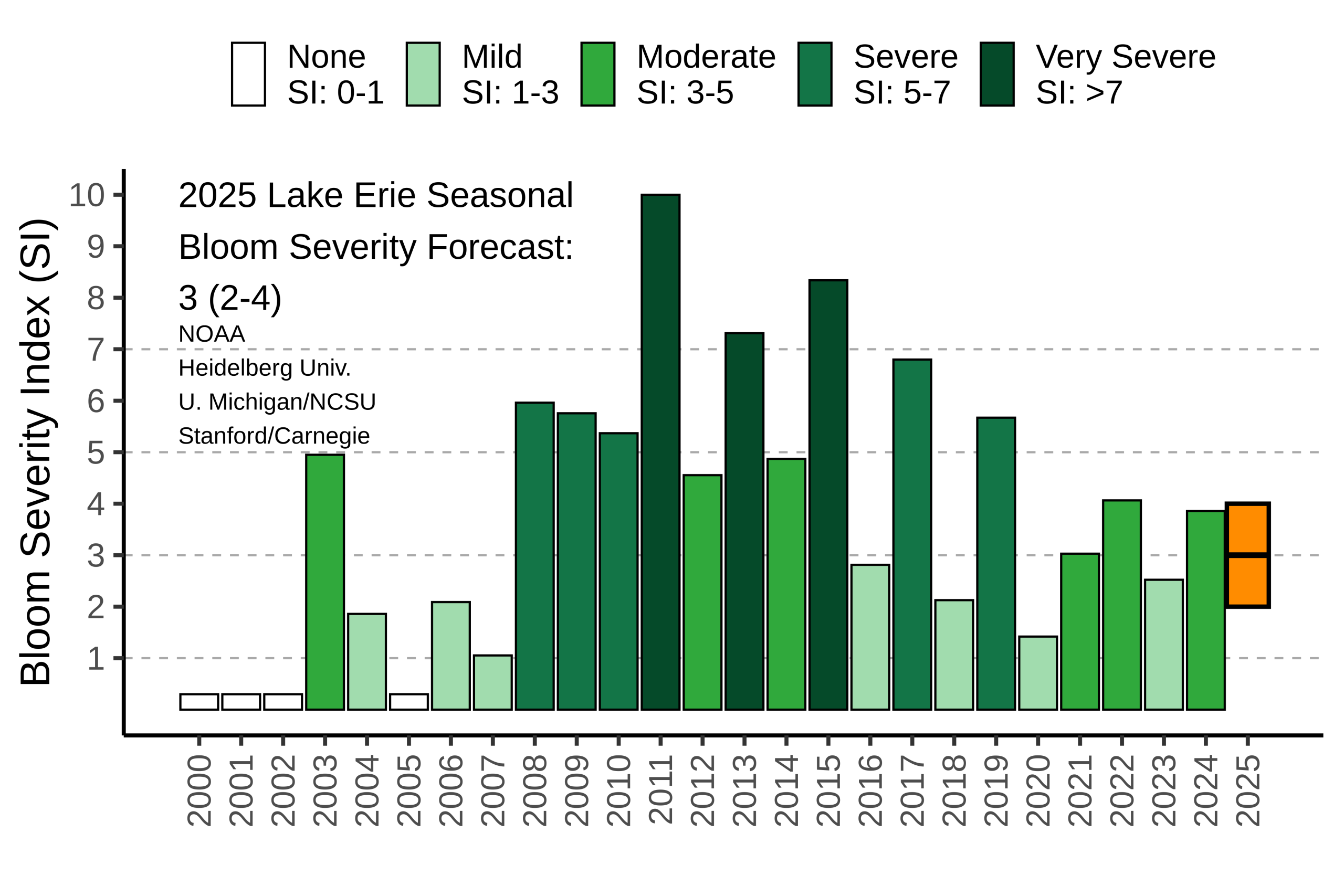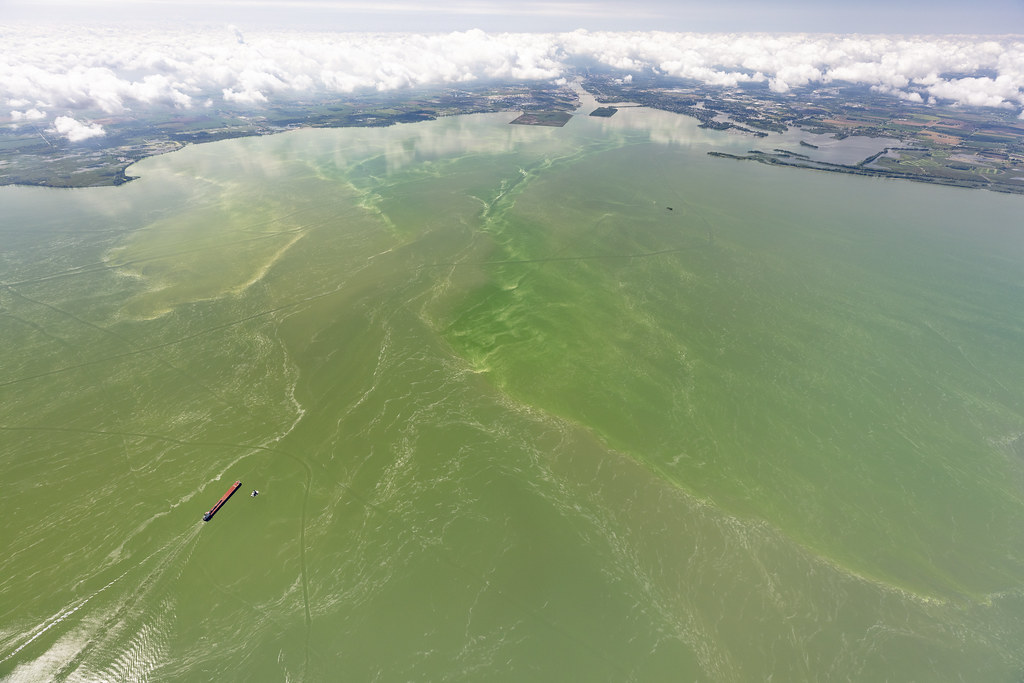NOAA and its research partners are forecasting a mild to moderate harmful algal bloom (HAB) in western Lake Erie this summer. This year’s bloom is expected to measure 3, with a potential range of 2-4 on the severity index.
The HAB severity index is based on the bloom’s biomass (the amount of algae) during the peak 30 days of the bloom. Moderate blooms have an index of 3-5, while an index above 5 indicates more severe HABs. Blooms over 7 are particularly severe, with extensive scum formation and bloom coverage affecting the lake. The largest HAB occurred in 2011, with a severity index of 10, followed by 2015, with a severity index of 8.3.

Lake Erie HABs consisting of cyanobacteria (i.e. blue-green algae) are capable of producing microcystin, a known liver toxin which poses a risk to human and wildlife health. Such blooms can force cities and local governments to include additional drinking water treatment and close beaches. HABs also harm vital local economies by preventing people from fishing, swimming, boating and visiting the shoreline, with annual economic impacts estimated at over $70 million.
Our Lake Erie HAB Forecast website provides predictions and visualizations of the bloom’s location and movement on the lake’s surface, as well as where the bloom is located within the water column. This information is especially helpful to water treatment plant operators because intake structures are usually located below the surface, so the risk of toxins in their source water may be greater when these cells sink.
The size of a HAB is not necessarily an indication of how toxic it is. Each algal bloom is unique in terms of size, toxicity and ultimately its impact on local communities. NOAA is developing tools to detect and predict how toxic blooms will be.
NOAA expects the start of a visible bloom by early July. The duration of the bloom depends on the frequency of high winds in September, which can’t be predicted this far in advance. Most of the bloom will remain in areas of the lake’s western basin. The central basin of the lake is usually unaffected except potentially later in the season, although localized blooms may occur around some of the rivers after summer rainstorms.

The forecast accounts for near-normal precipitation through July, though any increases in precipitation and associated river flow and nutrient load may lead to a bloom severity near the top of the forecast range. The range in forecasted severity reflects the uncertainty in accounting for the influence of factors such as residual nutrients already in the lake, or competition from other algal species. NOAA will issue a seasonal forecast update in late July based on observed nutrient loads from the Maumee River watershed into the western basin.
Since 2009, NCCOS has used satellite data from sensors across three different satellite missions (Terra/MODIS, Envistat/MERIS, and Sentinel 3/OLCI) to monitor the severity and impacts of the annually occurring bloom. Following the 2024 bloom season, NCCOS reprocessed the full time series with updated satellite calibrations, improved algorithms and additional data, generating a more complete, consistent and continuous data set for HAB monitoring in the lake.
In addition to the early season projections, NOAA also issues HAB forecasts during the bloom season, much like a 5-day weather forecast. These forecasts provide the current extent and 5-day outlooks of where the bloom will travel and what blue-green algae concentrations are likely to be seen, allowing local authorities to make informed management decisions. NCCOS also routinely delivers a hypoxia forecast for Lake Erie’s central basin.
Nutrient load data for the forecasts came from Heidelberg University in Ohio, and the various forecast models are run by NCCOS, the University of Michigan, North Carolina State University, Stanford University and Carnegie Science. Field observations used for monitoring and modeling are collected in partnership with a number of NOAA offices, including its Ohio River Forecast Center, NCCOS, Great Lakes Environmental Research Laboratory and Cooperative Institute for Great Lakes Research, as well as Ohio Sea Grant, The Ohio State University’s Stone Laboratory, The University of Toledo and Ohio Environmental Protection Agency.
